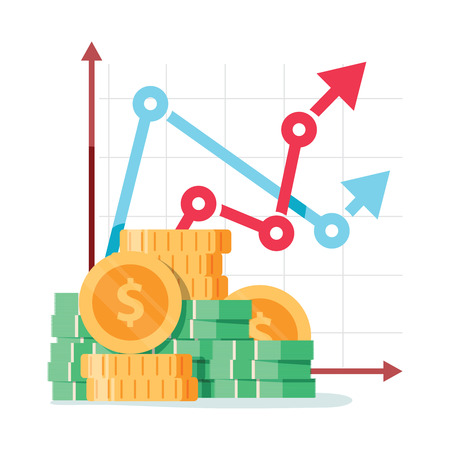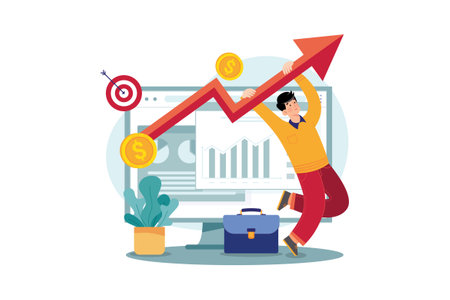1. Understanding High-Yield Savings Accounts
If you’re looking to make your money work harder for you, a high-yield savings account (HYSA) could be a smart choice. But what exactly sets these accounts apart from the traditional savings accounts you might find at your local bank? Let’s break it down in simple terms, focusing on key features like interest rates, accessibility, and FDIC insurance.
What Is a High-Yield Savings Account?
A high-yield savings account is a type of savings account that offers a much higher interest rate compared to regular savings accounts. These accounts are usually offered by online banks or credit unions because they have fewer overhead costs and can pass the savings on to you in the form of better rates.
Key Differences: High-Yield vs. Traditional Savings Accounts
| Feature | High-Yield Savings Account | Traditional Savings Account |
|---|---|---|
| Interest Rates (APY) | Much higher (often 4% or more as of 2024) | Low (usually less than 0.5%) |
| Accessibility | Mostly online or via mobile app; transfers to/from checking accounts | Available at physical branches and ATMs; also online access |
| FDIC Insurance | Yes, up to $250,000 per depositor per bank | Yes, up to $250,000 per depositor per bank |
| Minimum Balance Requirements | Usually low or none | May require higher balances for best rates |
| Fees | Generally fewer fees | May charge monthly maintenance fees |
Interest Rates: The Biggest Benefit
The main reason people choose high-yield savings accounts is the annual percentage yield (APY). While traditional savings accounts might offer less than 0.5% APY, high-yield options can give you four times that—or even more! This means your money grows faster, just by sitting in your account.
Accessibility: How Easy Is It to Use?
Most high-yield savings accounts are managed online or through mobile banking apps. You can easily transfer funds between your checking and savings accounts, but cash deposits or withdrawals might be trickier since there aren’t physical branches. If you’re comfortable with digital banking, this shouldn’t be an issue.
FDIC Insurance: Keeping Your Money Safe
You don’t have to worry about losing your hard-earned cash if something happens to the bank. Both high-yield and traditional savings accounts are insured by the Federal Deposit Insurance Corporation (FDIC) up to $250,000 per depositor, per bank. This means your money is protected even if the bank fails.
2. Comparing Banks and Online Options
When you’re ready to open a high-yield savings account, it pays to shop around. Different financial institutions offer different rates and features, so understanding your choices can help you make the most of your savings. Here’s how to compare your options, including online banks, credit unions, and national banks.
Types of Financial Institutions
| Type | Main Features | Pros | Cons |
|---|---|---|---|
| Online Banks | No physical branches, digital-first experience | Higher interest rates, low or no fees, 24/7 access | No in-person service, may take time to transfer money to/from other banks |
| Credit Unions | Member-owned, usually local or regional | Competitive rates, personalized service, community focus | Membership requirements, limited branch network |
| National Banks | Large institutions with many branches nationwide | Convenient branch and ATM access, wide range of services | Lower interest rates for savings accounts, more fees possible |
What to Look For When Comparing Options
- Interest Rate (APY): This is the most important factor. A higher APY means more money earned on your balance.
- Fees: Watch out for monthly maintenance fees or minimum balance requirements that could eat into your earnings.
- Accessibility: Consider how easy it is to deposit and withdraw funds. Online banks may require electronic transfers, while national banks offer in-person services.
- User Experience: Check if the bank has a user-friendly mobile app or website for managing your savings.
- FDIC or NCUA Insurance: Make sure your deposits are protected up to $250,000 per depositor.
Tips for Shopping Around
- Compare Rates Regularly: Rates change often. Use comparison sites like Bankrate or NerdWallet to find current top offers.
- Read Customer Reviews: See what other savers say about customer service and ease of use.
- Ask About Introductory Offers: Some banks offer bonuses for new accounts—but read the fine print!
- Evaluate Your Priorities: Decide if you value higher rates over in-person service or if you need both.
The Bottom Line on Comparing Your Options
No single type of institution is best for everyone. Take the time to explore what’s available—compare rates, features, and convenience—so you can find a high-yield savings account that fits your lifestyle and helps you reach your financial goals faster.

3. Checking Eligibility and Preparing Requirements
Before you can open a high-yield savings account in the U.S., its important to make sure you meet all the necessary requirements. Each bank or credit union might have slightly different rules, but most will ask for similar documents and details. Here’s what you need to know to get started:
Common Eligibility Criteria
Most U.S. banks require you to meet these basic qualifications:
| Requirement | Details |
|---|---|
| Minimum Age | You usually need to be at least 18 years old. For minors, a parent or guardian can often open a joint account. |
| Residency Status | You must have a valid U.S. address, and typically be a U.S. citizen or permanent resident (some banks allow certain visa holders). |
| Social Security Number (SSN) or Individual Taxpayer Identification Number (ITIN) | This is required for identity verification and tax reporting. |
Required Documents
Banks need to verify your identity and residency. Be prepared with these common documents:
| Document Type | Examples |
|---|---|
| Government-issued photo ID | Driver’s license, passport, state ID card |
| Proof of address | Utility bill, lease agreement, bank statement with your current address |
| SSN or ITIN card/number | Your Social Security card or official IRS letter for ITIN holders |
Minimum Deposit Requirements
Banks may require an initial deposit to open your high-yield savings account. This amount varies by institution but is often quite low—sometimes as little as $1, though some banks may require $100 or more. Always check the specific requirement before applying.
Typical Minimum Deposits by Bank Type:
| Bank Type | Typical Minimum Deposit |
|---|---|
| Online Banks | $0 – $100 |
| Traditional Banks & Credit Unions | $25 – $100+ |
Tips for a Smooth Application Process
- Gather your documents ahead of time so you’re ready to upload or present them.
- If applying online, ensure your information matches exactly across all documents.
- If you’re not a U.S. citizen, contact the bank first to confirm which visas or statuses they accept.
Once you’ve checked your eligibility and gathered your paperwork, you’ll be ready to move on to the application itself!
4. Opening Your Account
Step-by-Step: How to Open a High-Yield Savings Account
Opening a high-yield savings account is easier than ever, whether you prefer to do it online from the comfort of your home or walk into a local bank branch. Here’s what you can expect during the process:
Online vs. In-Person Application
| Step | Online | In-Person |
|---|---|---|
| 1. Choose Your Bank | Select a bank’s website or mobile app with the best rates and terms for your needs. | Visit your chosen bank’s nearest branch location. |
| 2. Start Your Application | Click “Open an Account” or similar button and fill out the online application form. | Request to open a high-yield savings account at the counter; fill out a paper or digital form provided by staff. |
| 3. Submit Personal Information | Enter details like your name, address, Social Security number, date of birth, email, and phone number. | Show your government-issued ID and provide the necessary information to the banker. |
| 4. Verify Your Identity | You may be asked to upload a photo of your ID or answer security questions for verification. | The banker will check your documents and verify your identity in person. |
| 5. Fund Your Account | Link an existing bank account for an initial deposit, set up direct deposit, or transfer funds electronically. | You can make a cash or check deposit right at the branch, or link another account for electronic transfer. |
What Documents Do You Need?
- A government-issued photo ID (like a driver’s license or passport)
- Your Social Security number (SSN)
- Your current home address
- An existing checking account or debit card information for funding (if required)
Verifying Your Information
Banks are required by U.S. law to verify your identity before opening any account. This process helps protect against fraud and ensures compliance with federal regulations. Expect to answer some security questions based on your credit history or personal background—this is standard practice and nothing to worry about!
Funding Your New High-Yield Savings Account
You’ll usually need to make an initial deposit to activate your account. Each bank sets its own minimum deposit amount—some may have no minimum, while others might require $100 or more. You can typically fund your new account by:
- Transferring money electronically from another bank account
- Depositing cash or checks (especially if applying in person)
- Setting up direct deposit from your employer
Once your initial deposit clears, you’ll get access to your high-yield savings account dashboard—usually online or through a mobile app—where you can start tracking your savings growth and set up additional deposits whenever you’re ready.
5. Managing and Maximizing Your Savings
Tips for Maximizing Your Earnings
Once your high-yield savings account is open, its important to make the most of it. Here are a few simple ways you can boost your earnings:
- Shop Around for Rates: Banks in the U.S. often change their interest rates. Keep an eye out for better offers, and consider moving your money if you find a higher rate.
- Avoid Fees: Some accounts have monthly maintenance fees or withdrawal limits. Make sure you understand your bank’s rules so you don’t lose money on fees.
- Keep a Healthy Balance: Some banks offer higher rates when you maintain a certain minimum balance. Check if this applies to your account and try to stay above that limit.
Setting Up Automatic Transfers
One of the easiest ways to build your savings is by setting up automatic transfers from your checking account. This way, you “pay yourself first” without having to think about it each month.
| Transfer Frequency | Benefits |
|---|---|
| Weekly | Helps build savings faster with small, regular amounts |
| Bi-weekly | Works well if you get paid every two weeks; aligns with paychecks |
| Monthly | Easiest to manage; good for larger transfers once a month |
You can set up automatic transfers through your banks online portal or mobile app. Most American banks make this process quick and straightforward.
Keeping Your Savings Secure within the American Banking System
Your savings are important, so make sure they’re protected. Here’s how to keep your money safe:
- FDIC Insurance: Make sure your bank is FDIC-insured. This means your deposits are protected up to $250,000 per depositor, per institution.
- Strong Passwords and Two-Factor Authentication (2FA): Use unique passwords and enable 2FA on your accounts for extra security.
- Avoid Public Wi-Fi: When accessing your accounts online, use secure internet connections to prevent unauthorized access.
- Monitor Account Activity: Regularly check your account statements and set up alerts for any suspicious activity.
Security Features Comparison Table
| Security Feature | Description | Why It Matters |
|---|---|---|
| FDIC Insurance | Covers up to $250,000 per person per bank | Keeps your money safe if the bank fails |
| Password Protection + 2FA | Adds an extra layer beyond just a password | Makes it harder for hackers to access your account |
| Email/Text Alerts | Sends notifications for withdrawals or unusual activity | You’ll know quickly if something’s wrong with your account |
| Account Monitoring Tools | Banks offer dashboards to review transactions easily | Makes it easy to spot unauthorized charges or errors early on |
If you follow these steps, youll be well on your way to managing and maximizing your high-yield savings account while keeping it secure in the American banking system.


